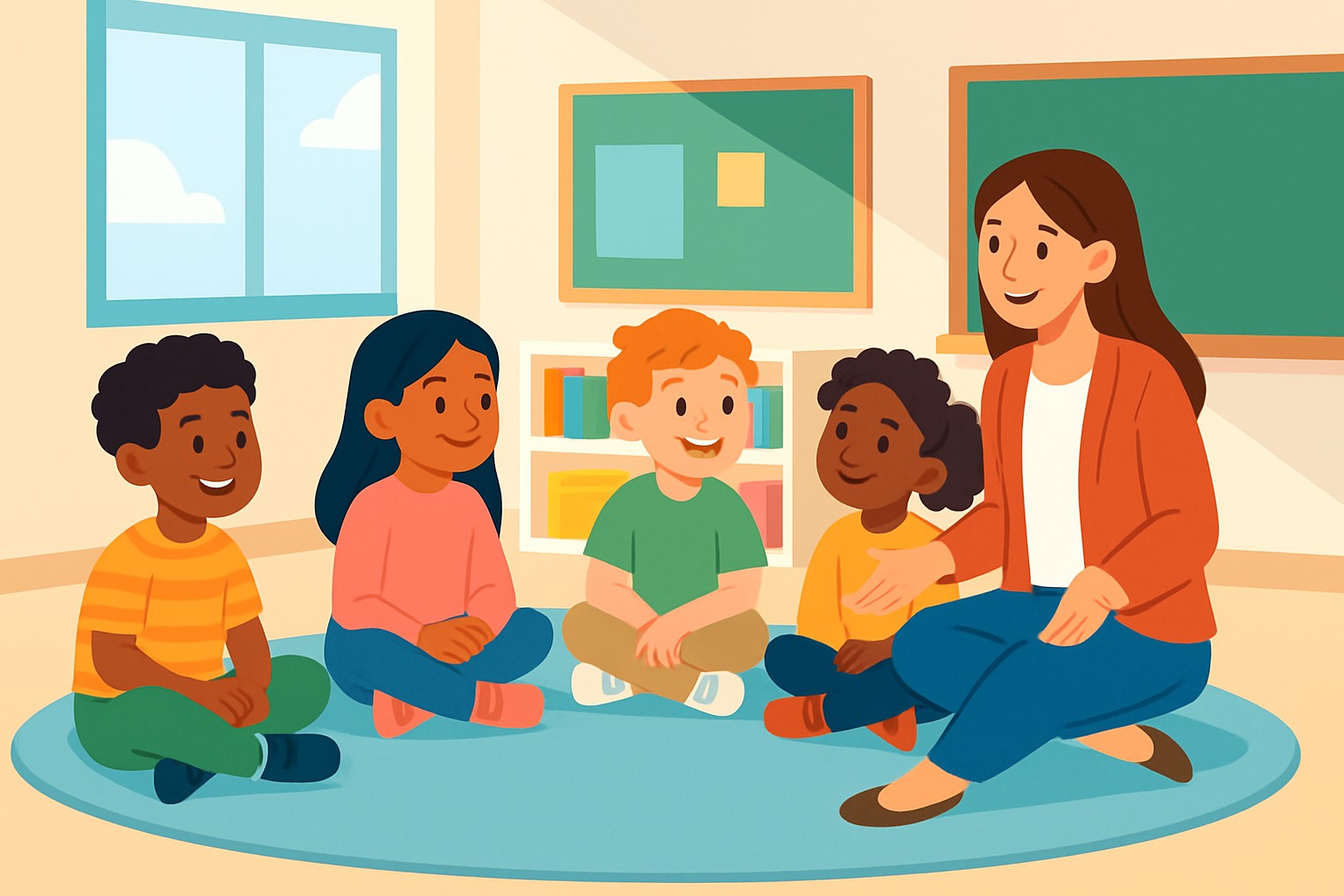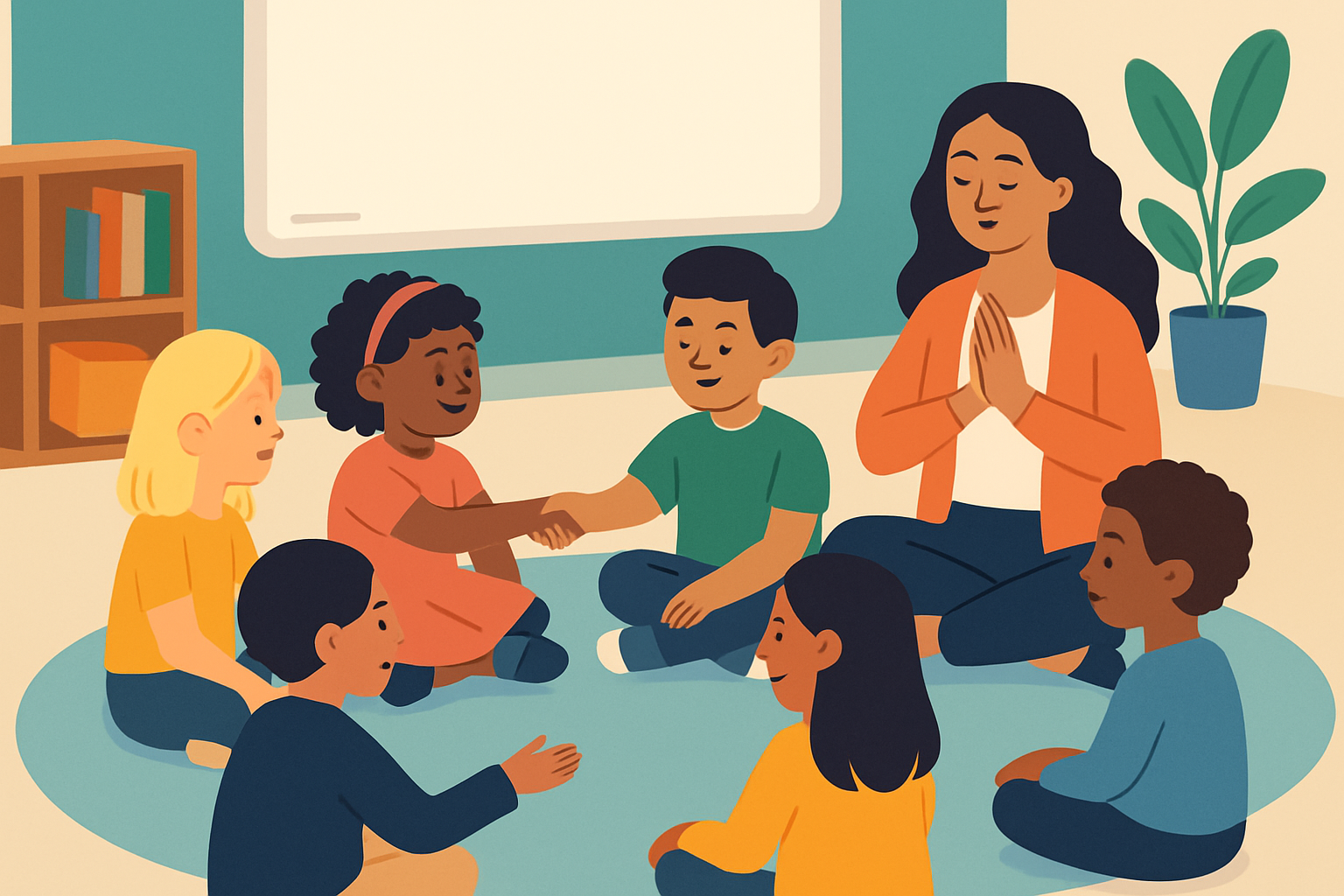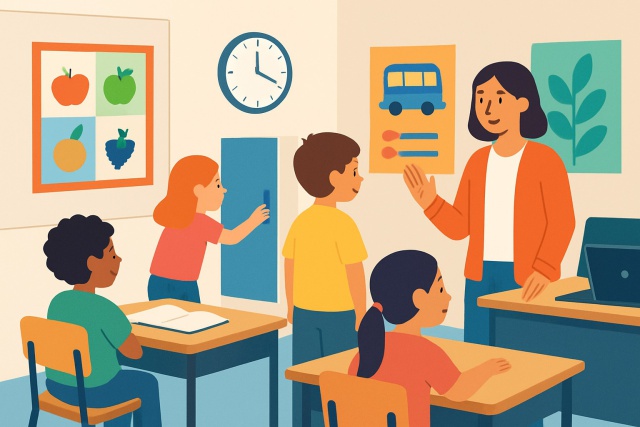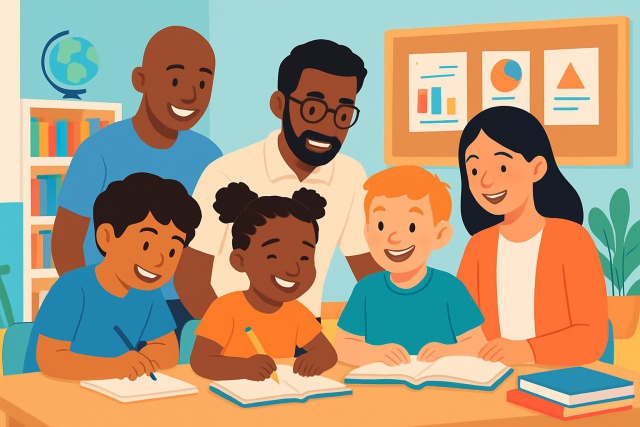Morning Meeting Activities To Build Classroom Community

Morning meeting activities really set the tone for a strong sense of community in the classroom. They’re a great way to kick off the day on a positive note, sparking connection and genuine engagement among the students.
Effective morning meeting activities are thoughtfully planned yet flexible routines that really get students talking and growing emotionally while feeling like they truly belong. They often feature greetings and sharing moments plus group games or mindfulness exercises—all crafted to help students sharpen communication skills, develop empathy and boost teamwork.
How Morning Meeting Activities Can Really Bring Your Classroom Community to Life
Morning meeting activities are a great way for students to open up and encourage teamwork while building trust and nurturing a sense of empathy. These essential ingredients create a warm atmosphere where everyone feels safe and truly belongs.
- They create a warm and emotionally safe space where students feel welcomed and supported like they belong.
- Morning meetings help sharpen communication skills by nudging students to interact regularly and share their thoughts.
- The activities spark teamwork by pulling students into group tasks that require collaboration and patience.
- They boost problem-solving as students tackle challenges together and often surprise themselves.
- Over time, students take ownership of their classroom culture and daily routines, making the space their own.
- These meetings deepen bonds between teachers and students and build a foundation of mutual respect.
Tips for Organizing an Effective Morning Meeting that Actually Works
Make your morning meetings count by keeping them consistent and sharply focused. Pick a regular time and a cozy spot that individuals look forward to. Build familiar routines and spell out clear goals for each session. This steady structure helps students settle in quickly and understand what’s on the agenda.
Choose a regular time and a cozy spot for the meeting that works for everyone’s schedule. Consistency is important.
Personally greet each student because a simple hello can make someone feel truly seen and appreciated.
Let students share their news, stories or feelings. This helps build real understanding and a genuine sense of community.
Include a group activity or game that encourages teamwork and keeps everyone engaged. After all, learning can be fun.
Start with a morning message or go over the day’s plan to set clear expectations and keep everyone on the same page.
Finish with a little ritual or a song that leaves students feeling positive and connected, ready to take on the day.
Effective Morning Meeting Activities That Really Help Build a Strong Classroom Community
Morning meeting activities fall into clear categories that seamlessly work together to build a stronger classroom community. Greetings and check-ins give students a chance to really connect and settle in, while sharing time sparks empathy and hones those all-important listening skills. Collaborative games get everyone on the same page, problem-solving tasks flex critical thinking muscles.
- Kicking things off with warm greetings and casual check-ins helps students feel right at home from the get-go.
- Carving out sharing time encourages active listening and quietly builds empathy through little personal stories that really stick.
- Tossing in collaborative games is a great way to nurture teamwork while sparking positive social vibes.
- Problem-solving tasks gently nudge students to put their heads together and sharpen their critical thinking skills.
- Throwing in some movement and mindfulness exercises often gives focus a nice boost and lends a hand in managing those tricky emotions.
The First Check-In Activities for Welcoming and Getting Started
Kick off the day with simple yet thoughtful greetings that give each student a genuine nod acknowledging them as individuals not just faces in the crowd. These little rituals foster a sense of belonging and celebrate the unique spark each person brings. They also help build real meaningful connections.
- Handshake chain: Students mingle around the circle exchanging creative handshakes to break the ice and keep things lively.
- Name game: Everyone shares their name paired with a movement or adjective that captures their personality, making introductions anything but boring.
- Cultural greetings: Participants take turns sharing greetings from different languages or traditions to add global flavor to the mix.
- Emotional check-ins: Students pick a word or emoji that sums up how they’re feeling right then and there like a little emotional weather report.
- Compliment circle: Each student passes along a genuine kind comment to someone else in the group sparking good vibes all around.
Activities to Spark Sharing Moments
Structured sharing moments offer students a valuable chance to express themselves while sharpening their listening skills. Gently guiding turn-taking and encouraging thoughtful reflections goes a long way toward building empathy and mutual respect. When students open up about their lives or ideas, it doesn’t just deepen connections—it also gives teachers a much clearer window into their needs.
- Show and tell, where students bring in an item and share why it holds a special place in their heart.
- Sparking moments of gratitude by having everyone express something they truly appreciate, which is a nice way to warm up the room.
- Swapping weekend stories because you’d be surprised how much gets packed into just a couple of days.
- Lighthearted 'Would you rather' questions to kick off conversations and keep things lively.
- Opening up about personal or academic goals to help foster a real sense of responsibility since owning your goals makes them all the more achievable.
Games and Activities for Working Together That Actually Bring People Closer
Group games centered around cooperation rather than competition usually do a great job at encouraging teamwork and sharpening problem-solving skills.
- Team puzzles that get everyone rolling up their sleeves to fit pieces just right, coming together to reveal the full picture.
- Group storytelling where each student adds a sentence, weaving together a tale that’s as unexpected as it is fun.
- The classic human knot activity: students join hands and figure out how to untangle themselves without breaking the chain—talk about teamwork and a bit of patience.
- Partner interviews where students take turns firing off questions and sharing stories about each other, often discovering surprising tidbits along the way.
- Cooperative challenges like building structures with a tight budget of materials, pushing creativity and collaboration to the limit.
Exercises for Movement and Mindfulness Finding Flow and Focus
Kicking off morning meetings with gentle movement and a touch of mindfulness can really help students zero in and shake off any lingering tension. It also gears their minds up for the day ahead.
- Stretching exercises crafted to gently wake up your body and give your circulation a friendly nudge.
- Guided breathing techniques aimed at calming the busy nervous system we all have racing sometimes.
- Mindful listening to the sounds around you helps you tune in and deepen your awareness in a way that feels grounding.
- Basic yoga poses that invite you to build strength and flexibility without feeling like a workout.
- A sensory check-in where students pause to notice and name whatever feelings or physical sensations are bubbling up — like hitting the refresh button on your inner world.
Tips for Tailoring Morning Meeting Activities to Different Age Groups and Class Sizes (Because One Size Rarely Fits All)
Morning meeting activities tend to hit their stride when they’re tailored to the developmental stage and size of your class. With younger kids, simpler language and shorter tasks usually do the trick—they just click better that way. Older students are ready to roll with more complex challenges, eager to stretch their thinking a bit.
- Keep the language and rules nice and simple to make activities a breeze for the younger kids.
- Toss in some trickier tasks for the older students that really get those critical thinking gears turning.
- Chop up big classes into smaller groups so nobody’s left on the sidelines, giving everyone their moment to shine.
- Mix up leadership roles regularly to help different students build their confidence and step up to the plate.
- Stay tuned to how engaged the kids are and be ready to adjust activities on the fly to keep their interest from wandering off.
Typical Challenges and Some Handy Ways to Tackle Them
Holding morning meetings regularly often runs into common hurdles like tight schedules or students feeling shy. It can also be a struggle to keep your morning meeting activities on point and engaging.
Keep meetings short and sweet to protect that valuable instructional time and maintain everyone's energy levels.
Set clear expectations so students understand exactly what is expected of them and how to behave without any guesswork.
Involve students in choosing activities since they are more likely to engage if it is something that truly interests them.
Stay flexible and ready to adjust routines as needed based on the classroom atmosphere, because plans can often change unexpectedly.
Offer occasional praise to encourage positive participation, as recognition helps students feel valued and appreciated.






